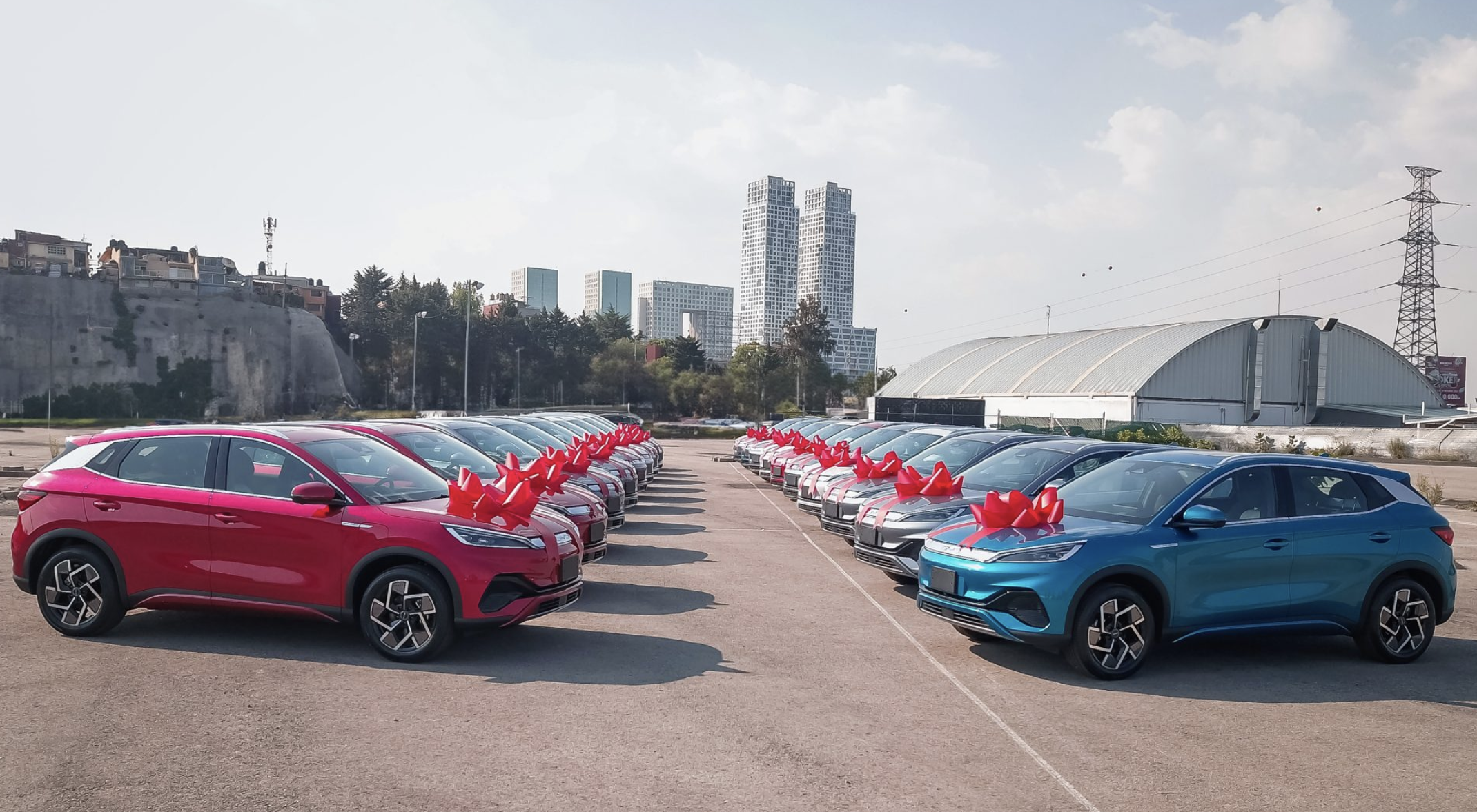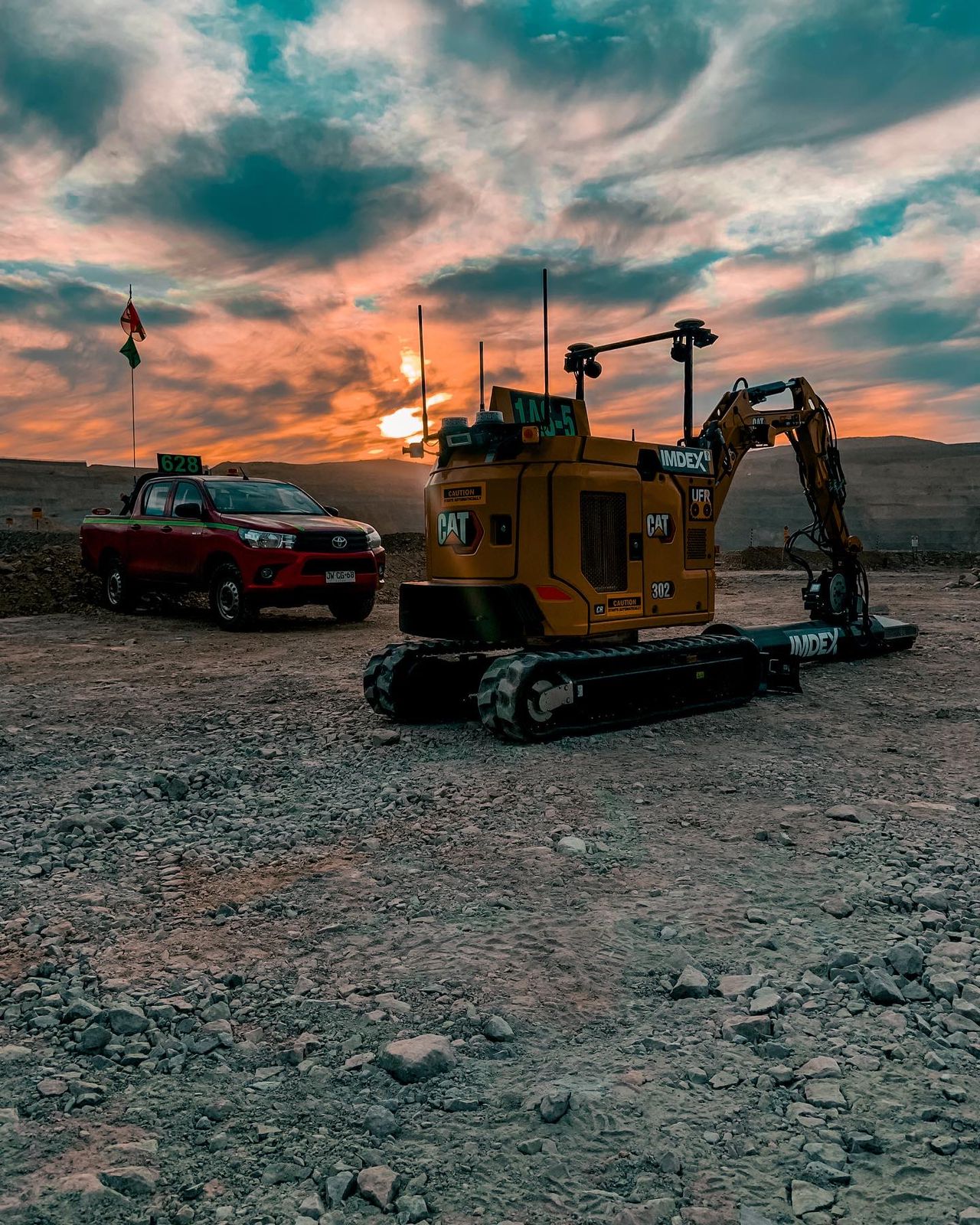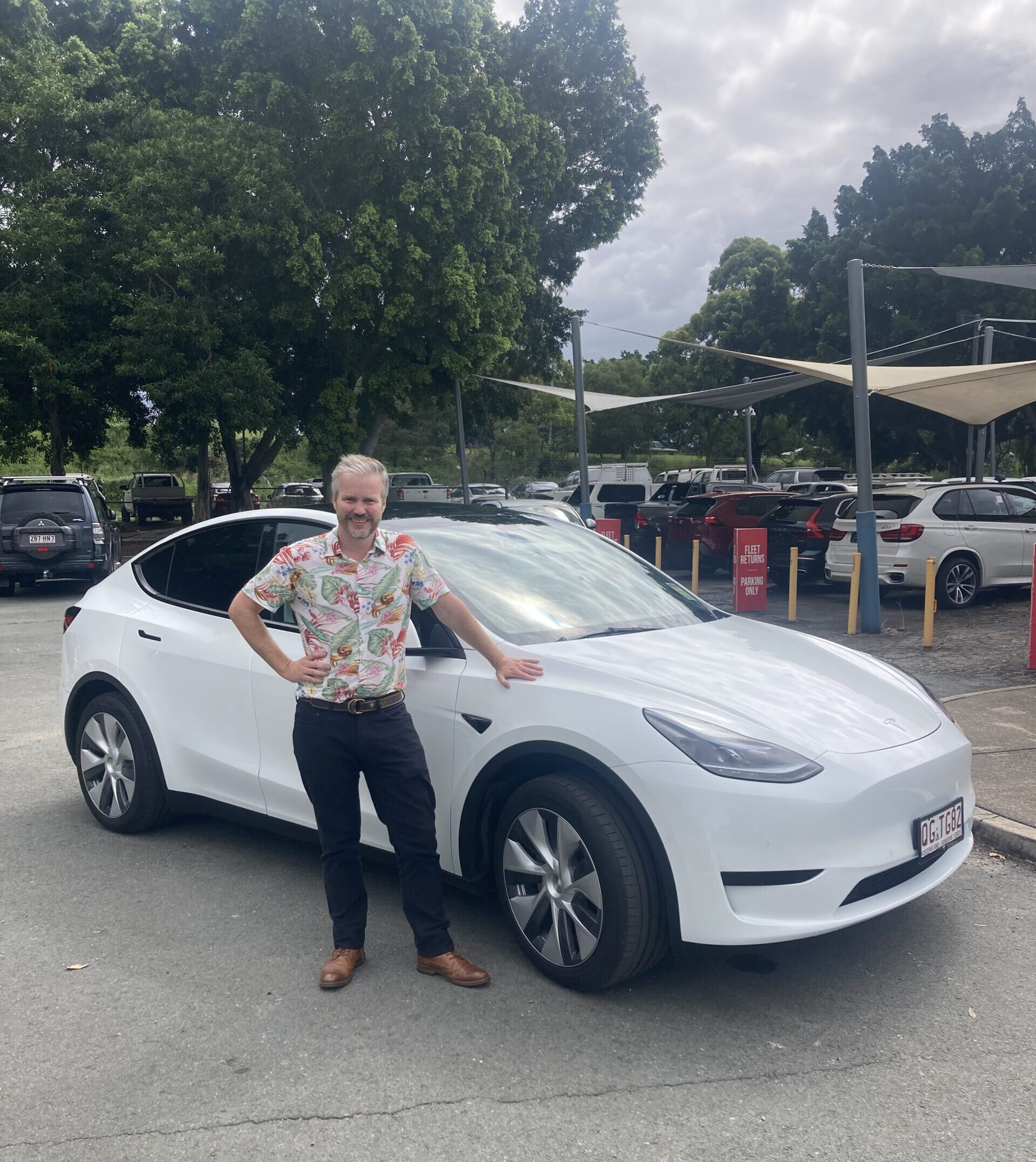Sign up for daily news updates from CleanTechnica on email. Or follow us on Google News!
Last week, China’s President, Xi Jinping, was in Paris, France. Again, there were calls for China to address “Structural Overcapacity” that “will lead to Chinese EVs flooding Europe.” The loudest call came from Ursula von der Leyen, President of the European Commission, who said “China continues to massively support its manufacturing sector [Is that a bad thing? Shouldn’t all countries support their industries?], combined with a domestic demand that is not increasing, thus the world cannot absorb China’s surplus production.” She added that, “As we have shown, we will defend our car companies, we will defend our economies, and we will not hesitate to do so.” This means more tariffs for China-made stuff I guess.
President Xi Jinping addressed these concerns by saying that China’s new energy industry has made great progress in an open and competitive environment and represents advanced production capacity. He added that this helps to increase global supply, alleviates the pressures of global inflation, and contribute immensely to the global climate response and the green transition. He also said that the so-called problem of overcapacity in China does not exist either from the angle of comparative advantage or in light of global demand.
So, essentially, they want China to curtail its new energy sector. That does not have to be the case. If the European Commission is not too keen to have new energy vehicles, solar and battery storage products, and other things from China at levels they consider “flooding,” there is a big opportunity for any capacity in China that may been deemed “spare capacity” to be aggressively redirected to make a real impact in other parts of the world, such as Asia, Central and South America, as well as Africa. The local Chinese market as well still has a lot of room to grow if we look at the EV market. If you look at the level of motorisation in China, it sits at around 200 cars per 1,000 people, whilst in Europe it’s around 600 and in the USA it’s above 800.
In this article, I will use some cases from Africa as an example. The transition to new energy vehicles as well as to cleaner electricity generation systems can help transform lives of entire communities in many parts of the African continent. What is the current status of the energy and mobility landscape and how can fully utilising and optimising available and future production capacity help address these critical challenges faced by many countries on the African continent?
1. The Direly Low Access To Electricity Situation In A Lot Of African Countries
We still have not achieved universal access to electricity on the African continent. A lot of countries are yet to bring access to electricity to more than 50% of their citizens. We always hear that more than 600 million people in Africa don’t have access to electricity, and that close to a billion don’t have access to clean cooking! For how long do these matters have to be the subject of conference after conference with little progress towards the set targets? Firm action plans backed by tangible funding (not promises) need to be expedited ASAP.
To urgently address this dire situation, a combination of mini, small, medium, large, and very large distributed renewable solutions backed by battery storage could play a key role in addressing these longstanding issues. These could be applied at utility scale, commercial and industrial, urban residential, rural, and off-grid/mini-grid level. With the right business models and funding structures, hundreds of GW and GWh of capacity can be installed cumulatively across multiple African countries in quick time depending on each individual country, city, town, or village’s needs. Distributed mini grids plus energy as a service battery rentals for productive use of energy could help transform the lives of millions in many rural parts in a lot of countries on the African continent and we have all the tech we need in the world right now. It’s now just about getting action items actually “actioned.”
We have a great example of rapid adoption of distributed solar in the C&I and residential sector from South Africa, where 3 GW of solar in the C&I and residential solar sectors were added in just over a year from March 2022 to June 2023. So, it’s possible to add decent electricity generation capacity very quickly. Creating the right environment to also encourage utility-scale solar, hydro, and wind, for example — along with the associated support for upgrading electricity transmission and distribution infrastructure, providing technical assistance and training for overall grid improvement and resilience to enable the successful integration of an expanded variable renewable generation program — could be extremely valuable. International partners could help structure loans and grants similar to how some of these facilities have been offered and supported loans for roads, dams, mines, railway projects, ports, airports, parliament building amongst other programmes on the African continent. Of course, Chinese firms should not do it alone — these arrangements and partnerships can and should be made with companies from Europe and America as well without necessarily over-politicising issues. We have big problems of energy poverty to solve!
Utility-Scale Battery Storage
Some examples of some recent financial facilities that have been offered to support power infrastructure include a loan of around $1.5 billion from China for two 300 MW new coal power plants in Zimbabwe. These kinds of facilities can be redirected towards cleaner and more sustainable energy projects. For example, Zimbabwe has close to 300 MW of old thermal plants that have been recently decommissioned, as they were way past their useful life. Can similar loan arrangements be structured to retrofit those to add large battery storage? These new utility-scale batteries can utilise existing transmission infrastructure, etc., and also complement solar and hydro by charging off peak and then discharging during peak periods as well as providing other ancillary services as needed.
In Kenya, electricity generation firms are often forced to curtail generation during the low-demand overnight period. Most of this curtailed generation is from geothermal plants. Accelerating the deployment of utility-scale battery storage can help unlock efficiencies by storing some of their energy and then discharging it during peak period as well as offering other grid support services. Recently, Tanzania also reported excess generation capacity which has resulted in TANESCO curtailing generation. Battery storage on a large scale can also play a key role in this energy mix. As the costs of battery storage keep falling, there has never been a better time to look into it for many countries on the African continent. We have seen just how valuable battery storage can be from places such as Australia and California, so these are proven solutions that can be applied today, and the capacity to produce these is readily available and can be scaled up as needed. With the price of battery storage systems at an all-time low, this is the opportunity to deploy this technology across multiple countries on the continent as needed.
Of course, due to the low electricity access in general in most parts of the continent, there is a super urgent need to ramp up electricity generation. For example, in the southern African region, the current generation shortfall is around 11.2 GW. This does not factor in any growth in demand, meaning a lot more generation capacity will be needed to bridge the gap quickly as well as factor in any demand growth forecasts. This means countries in Africa would need to ramp up generation, leveraging on all available resources, including ramping up construction of any hydropower projects, both small and large hydro, as well as any utility-scale and C&I solar projects. The price of solar panels has never been better, and again the capacity is there to really cater to these utility-scale solar projects. With real will and action from national governments as well as local business and other stakeholders, noteworthy progress can be made to improve access to electricity on the African continent.
The world does not have to wait for any upcoming technology discoveries; the solutions we need are already available. More importantly, the production capacity is already there. Therefore, we cannot talk about overcapacity that cannot be absorbed when there are still hundreds of millions people who are underserved. Smart partnerships between project developers, global local financiers, and most importantly, the right level of support and buy-in from the various governments on the African continent can help bridge this energy poverty gap. It’s possible to lift people out of this energy poverty very quickly if a bit more of the available recourses are directed to the right places.
With wide access to electricity, partnerships to improve road infrastructure plus enable the rollout of electric vehicle charging infrastructure, the next major problem can be tackled, which is the issue of low motorisation and general lack of efficient transport systems in both urban and rural areas of a lot of countries on the African continent.
2. Low Levels of Motorisation and General Transport Issues In Africa
Looking at the new vehicle sales in Africa compared to other regions, it is not hard to see why traditional auto giants from the West and all do not really view Africa as a market to focus on. Annual new vehicle sales in Africa are about 1% of global new vehicle sales. Perhaps this is why Tesla also does not look interested in the African vehicle market. However, new vehicle sales do not show the real picture for Africa, as about 90% of vehicles imported into the various countries across the continent are used vehicles from other continents. These used vehicle imports represent a big addressable market for the right kind of brand new vehicles. There is now a nice range of more affordable brand new EVs that are being introduced on the Chinese market, and with the right type of business models, these vehicles could essentially create a whole new market for brand new vehicles in Africa that did not exist before. How? For example, small EVs such as the Changan BenBen E-Star that retails for about $6,000 in China could land in a lot of African countries at prices that are quite competitive with some of the popular used ICE cars, such as the 5- to 10-year-old Honda FITs or Mazda Demios. These can then progressively take a large market share from the used ICE vehicle imports, providing significant offtake for new energy vehicles, as they are called in China.
Another crucial point is that even with these used vehicle imports that are in their millions per year across the continent, the majority of African countries still have extremely low levels of motorisation compared to countries in the developed world. Only a handful of countries have motorization rates above 100 vehicles per 1000 people. The majority of countries have rates below 50 passenger vehicles per 1000 people. To put this into perspective, South Korea and Germany have rates above 500 passenger vehicles per 1000 people. The USA has an even higher rate that is closer to 800 vehicles per 1000 people according to a study by Siemens Stiftung.
That means there is a lot of room for growth in the African transport sector that can be filled with the right kinds of electric vehicles that are tailored to be best fit for the respective markets on the African continent. Another crucial point to note is that even though the majority of countries are starting from an exceptionally low base, sales of vehicles (new and used imports combined) are growing at rates of around 10% per year in a lot of these countries, and here lies the opportunity for another leapfrog moment. There is a high probability the first car many people will own or have access to will be an electric car, totally bypassing the ICE age.
This opportunity is most likely to be missed by the traditional/legacy automakers looking at the new vehicle sales as the Total Addressable Market (TAM). They are probably also thinking something like “there probably isn’t the infrastructure in place in a lot of countries to support EVs.” This then leaves the door wide open for bold startups in the New Energy Vehicle space. Chinese players come to mind. Just like in the mobile phone industry, it was not the iPhone that drove the revolution, but the low-cost South Korean and Chinese barebones Android phones that understood the market they wanted to target and included things like dual SIM card functionality and grabbed the market. In the same fashion, we will start to see the equivalents of Tecno, Xiaomi, Oppo, Huawei, and the basic Samsungs of the EV space. Well, Xiaomi recently launched an EV! The SU7, however, it is in a more premium vehicle segment, competing with the Model 3 and similar models in China, but Xiaomi will probably launch some more affordable models, sooner rather than later.
So, which type of vehicles can Chinese firms help with and in which segments? We’ll look at some examples that can make an immediate impact. Why Chinese? Well, they are the firms that currently have sufficient production capacity, or as they call it, “structured overcapacity,” to meet the needs of any new markets at significant scale at more affordable price levels.
Electric Motorcycles & Three-Wheelers
Major players with significant capacity and resources, such as CATL and BYD for example, can provide cells and battery packs needed to support and scale up the nascent but promising electric motorcycle sector in Africa, where millions of internal combustion engine motorcycles can be replaced with new electric ones right across the entire Boda Belt. Technical support in terms of skills transfer amongst other areas should also be prioritized and can really help transform the electric mobility sector on the African continent.
The move towards electric vehicles in Africa, especially in the electric motorcycle sector, has mainly been driven by the private sector led by small startups. Most of the developments have been concentrated along what is now known as the “Boda Belt” of countries on the African map where motorcycle taxis are prominent. This belt stretches from Dar es Salaam, Tanzania, to the outskirts of Dakar, Senegal. There is also significant activity in North African countries such as Morocco, where smaller scooters are used mainly for personal transportation, unlike in East Africa and West Africa, where most of the activity is for commercial transport purposes.
The private sector players that have initiated this electric motorcycle movement in Africa can partner and get support via collaborations with these established players to really ramp up their activities and start displacing a considerable number of internal combustion engine motorcycles. The electric three-wheeler segment is another segment where similar collaborations could result in a rapid shift to electric. These vehicles are more affordable and can be a more inclusive solution in remote rural areas where the infrastructure may now be ideal for larger vehicles to navigate. Their battery packs are also fairly small, ranging from about 4 to 10 kWh, making them quite easy to charge with distributed solar systems. There is also significant capacity in India in the two-wheeler and three-wheeler segments that should be leveraged as well.
Electric Cars, Pickups, & SUVs
There are now a lot more electric vehicles across the major vehicle segments. There are also more right-hand-drive vehicles in these electric vehicle segments, meaning that all countries on the African continent can now be accommodated. Some examples of target segments and potential offtakers that could drive a dramatic uptake in electric vehicles are fleet operators. Government fleets, police and army fleets, local councils and provincial governments, water and power utility companies, telecommunications firms, as well as climate conscious NGOs, donor agencies, multinationals, UN agencies, and private corporations that are keen to meet sustainability and other ESG goals could also be other key offtakers. Fleet operators in the mining sector, logistics companies, agricultural enterprises, primary and high schools, colleges, universities, airports, public transport cooperatives, plus other formal and informal operators on ride-hailing and shared-mobility platforms represent some of the other key stakeholders.

A lot of these users and their operations need a lot of off-road capable vehicles. There are several good examples of both fully electric and plug-in hybrid electric pickups, SUVs, and vans that are now widely available in China and also starting to be offered in some African markets. Some of the electric pickups being offered include the Radar RD6, including the new AWD version (which will be available in places such as Rwanda soon), the JAC T8 EV, and the SAIC Maxus T90 EV. Some SUVs to look at, for example, could be the Dongfeng M-Hero 917, BYD’s Fang Cheng Bao series (Bao 5 and 8), as well as BYD’s Yangwang U8 for the more premium market. For other fleets, such as taxi or rideshare applications as well as private vehicle buyers, there is a plethora of affordable electric vehicles now in the Chinese marker that are covered regularly here.
Electric Buses
Electric buses for both intracity and intercity bus routes, along with the associated charging infrastructure, can be a game-changer for commuting on the continent. There is generally a lack of adequate mass transit options in most countries on the continent. Innovative financing solution similar to the ones being introduced in East Africa, such as the pay as you drive platforms, can unlock incredible opportunities to lower operational costs for bus operators switching from ICE to EVs. This will help support wider adoption of electric buses.
Keeping Momentum Going
A lot of progress has been made in the solar, stationary storage, and electric vehicle segments with growing market shares in a lot of countries in the developed world. Ramping up production capacity in all of these sectors as well as technological advancements over the past decade helped unlock efficiencies in key areas, resulting in incredible price drops in the cost of production of all the essential ingredients. This has resulted in consumers now having access to solar panels, batteries, and EVs at prices lower than ever. Solar panel prices are so low now that we now hear reports that it’s cheaper to buy solar panels and use them to construct fences in some places in Europe than to use traditional fencing material! A fence that also generates clean electricity — how cool is that?
There was a time when it was feared in some circles that there would not be enough supply of batteries to meet production demands for electric vehicle production, but now we hear of “structured overcapacity that cannot be absorbed by the world.” With many parts of the world still facing energy and mobility poverty, there cannot be a case of overcapacity that cannot be absorbed. We just need to get the right people in the right room and kickstart the conversation to tackle this energy poverty crisis sustainably and profitably. Now is not the time to slow down production capacity of products for applications in the energy transition. Overall, the world needs to make the most use of all available capacity in the most sustainable way, increasing the share of cleaner energy technologies globally as well as increasing access to electricity for those who currently do not have access.
Have a tip for CleanTechnica? Want to advertise? Want to suggest a guest for our CleanTech Talk podcast? Contact us here.
Latest CleanTechnica.TV Video
CleanTechnica uses affiliate links. See our policy here.







